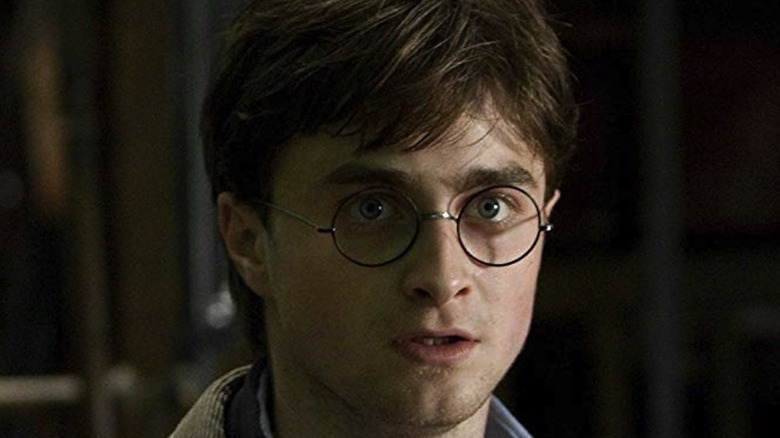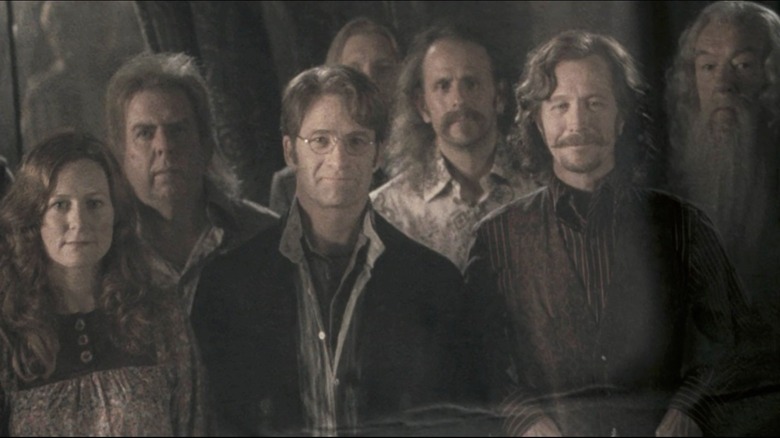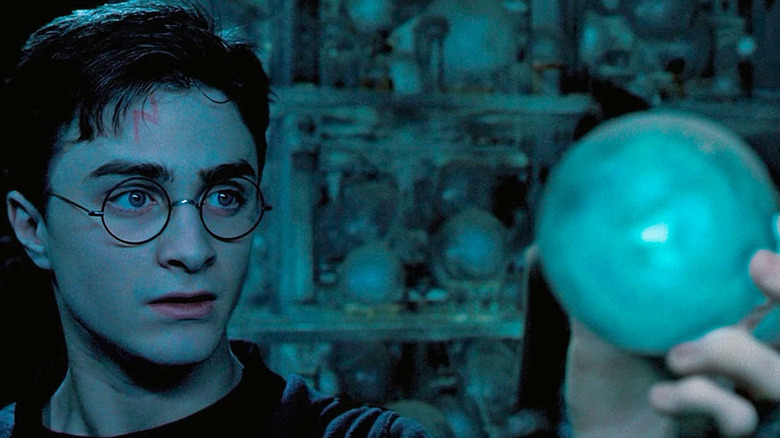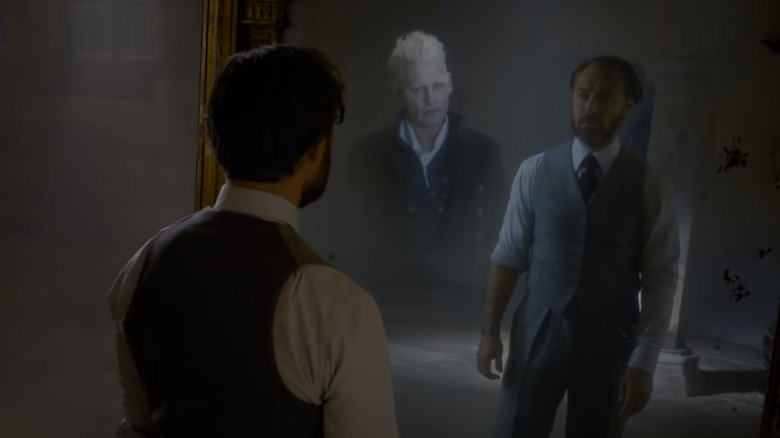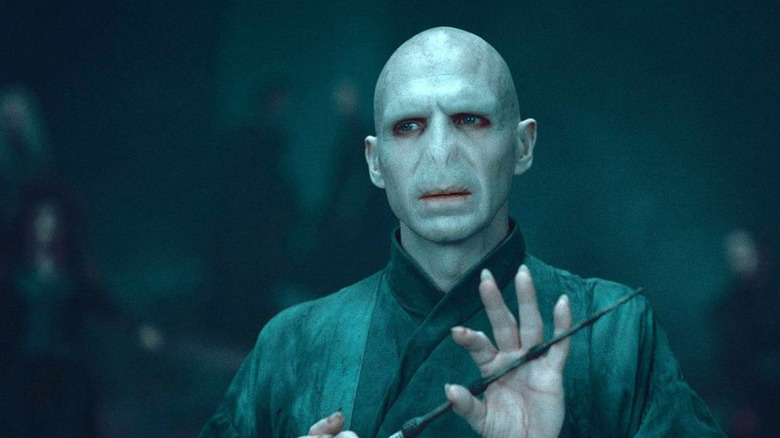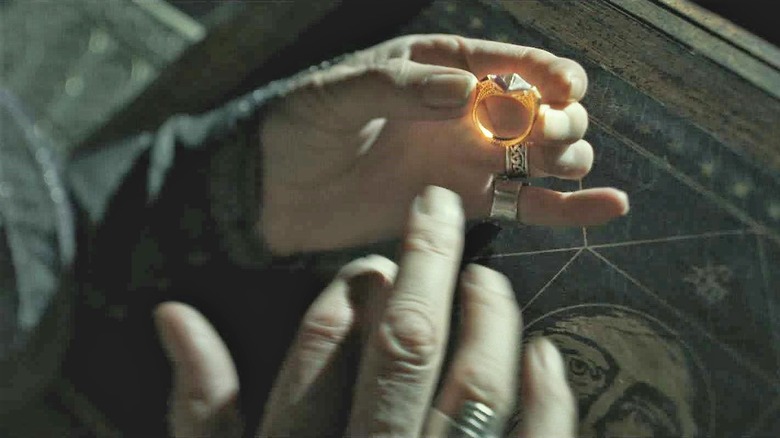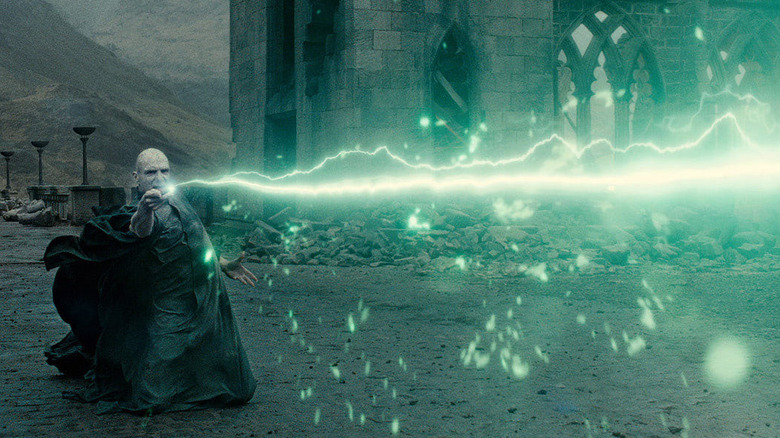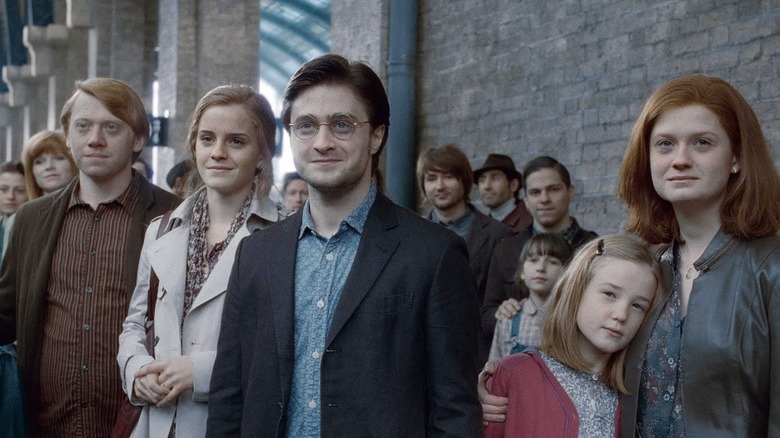Harry Potter: The History Of The Order Of The Phoenix Explained
The television special "Harry Potter 20th Anniversary: Return to Hogwarts" has been released on HBO Max. What a time to be alive! This event was created to celebrate the 20th-anniversary release of the movie "Harry Potter and the Sorcerer's Stone." And while the special was joyful enough on its own, why not continue the Harry Potter celebrations?
The wizarding world of Harry Potter has an abundant supply of deep lore that could keep audiences discussing for days. However, the history of the Order of the Phoenix is one of the most crucial stories, and it needs to be analyzed. The Order of the Phoenix was first introduced in the fifth book, accurately titled "Harry Potter and the Order of the Phoenix." The Order was founded by Dumbledore with the goal of stopping Voldemort and his rise to power. And while it seemingly achieved its goal, fourteen years after disbanding the group, the Order would come together once more when Voldemort's rise again became imminent. With this in mind, let's take a look at the full history of the Order of the Phoenix and how the "Harry Potter" series played out from the Order's point of view.
Why the Order of the Phoenix was founded
Dumbledore initially founded the Order of the Phoenix in the 1970s to fight against Voldemort (Ralph Fiennes) when he first rose to power. At the time, Voldemort's goal was to take over the Wizarding government, the Ministry of Magic. He hoped to eradicate Muggle-born witches and wizards, opting for the idea that those born with pureblood should rule above all else. This was known as the First Wizarding War.
The Order suffered greatly during this time. Many lives were lost, including those of Lily and James Potter. However, some witches and wizards in the Order suffered a fate worse than death when their lives were forever changed. For example, Sirius Black (Gary Oldman) was unrightfully sent to the Wizarding prison Azkaban, and Frank and Alice Longbottom were tortured to insanity. It's clear that the Order's victory came at great cost. However, by the '80s, it was worth it, as Voldemort's power came to an abrupt halt when he murdered the Potters. His demise came after his killing curse backfired on him when trying to murder their son Harry (Daniel Radcliffe). And while Dumbledore had his doubts about the validity of Voldemort's death, the Order disbanded as it was clear that — for the time being — all was well.
The prophecy
Hogwarts Divination Professor Sybill Trelawney (Emma Thompson) was always considered somewhat of a quack. However, in "Harry Potter and the Order of the Phoenix," Harry learns that she made a prophecy to Dumbledore that caused the death of his parents. In particular, Sybill prophesied that someone would be born with the power to stop Voldemort, and that person would be born in the seventh month of July and have parents who have defied Voldemort three times. Once Voldemort heard this prophecy, the child born could have been either pure blood Neville Longbottom (Matthew Lewis) or half-blood Harry. Interestingly enough, Voldemort chose Harry, who had a Muggle-born parent like Voldemort. He marked Harry as his equal when a part of the Dark Lord's soul latched onto the child in the shape of a lightning bolt on his forehead.
Professor Trelawney never learned of the part she played in this tale — only Dumbledore, Harry, and Professor Snape (Alan Rickman) knew the truth. Sadly, it was Snape who heard some of the prophecy and reported it to Voldemort. However, once he discovered that Voldemort planned to kill the love of Snape's life, Lily Potter, he changed his allegiance and helped Dumbledore protect Harry.
Dumbledore's relationship with the Dark Arts
Albus Dumbledore was originally portrayed by Richard Harris in "Harry Potter and the Sorcerer's Stone" and "Harry Potter and the Chamber of Secrets." After his passing, Michael Gambon took on the mantle of the father figure for Harry. Most recently, Jude Law stepped into the role of a young Dumbledore in the "Fantastic Beasts" series.
Dumbledore was a complex character with quite a backstory. He was considered the greatest wizard of all time and the only one that Voldemort was afraid of. While he was a champion for good and the founder of the Order, Dumbledore had an interesting relationship with the Dark Arts. After the passing of his parents, Dumbledore moved back home to take care of his sick and troubled sister Ariana. It was there that he met Gellert Grindelwald (originally portrayed by Johnny Depp before being recast with Mads Mikkelsen), a wizard whose intellect could match his own.
Dumbledore and Grindelwald formed a relationship and became obsessed with finding the Deathly Hallows, three powerful magical objects that would make the owner the master of death. During this time, it was Dumbledore who coined the phrase, "for the greater good" — something that Grindelwald would use as his slogan when becoming a powerful Dark Wizard. After the accidental death of his sister Ariana, Dumbledore realized that power corrupted him and abandoned his search for the Hallows. He never saw Grindelwald again until their legendary duel where Dumbledore won the Deathly Hallow Elder Wand from him.
Voldemort's return to power
In "Harry Potter and the Goblet of Fire," Voldemort returned to power. Once Harry informed Dumbledore that Voldemort was back, he quickly reinstated the Order and informed the wizarding community. However, the Minister of Magic was too afraid to accept the truth and attempted to discredit Harry and Dumbledore for "telling lies."
This time around, without the support of the Ministry, the Order was forced to work in secret. However, once Minister for Magic Cornelius Fudge (Robert Hardy) himself witnessed Voldemort in "Harry Potter and the Order of the Phoenix," Harry and Dumbledore were vindicated, and the wizarding community channeled its attention to stopping Voldemort. Voldemort's return marked a turning point for the series, as it wasn't just the wizarding world that was preparing for war and casualties, but readers as well. Sirius died in "The Order of the Phoenix," so audiences were ready to buckle up and prepare for more character losses and all-out war.
Horcruxes versus Hallows
After the Order's First Wizarding War, Dumbledore learned that Voldemort separated his soul into six pieces to create Horcruxes. A Horcrux is an object created by Dark Magic as a way of achieving immortality, and one cannot completely die unless all their Horcruxes are first destroyed. Once Dumbledore believed Voldemort had achieved this goal, he knew that the Dark Wizard would return and that Harry was in danger.
In "Harry Potter and the Chamber of Secrets," Harry destroyed Tom Riddle's diary and brought it to Dumbledore. This was the first of Voldemort's Horcruxes. Once Harry was old enough, and Dumbledore realized that he was running out of time, he explained to Harry in "Harry Potter and the Half-Blood Prince" that Voldemort had created six Horcruxes that must all be destroyed before he can be killed. And while Dumbledore would have helped Harry on this journey, he was once again seduced by the Deathly Hallows when he came across a ring that Voldemort turned into a Horcrux. This ring was a Hallow and poisoned Dumbledore, giving him a few months to live. It's why he enlisted Snape to kill him ahead of time before the poison could finish the job. With Dumbledore gone, it was Snape's job to tell Harry that he was the final Horcrux Voldemort didn't mean to make. In order for Voldemort to be stopped, Harry would have to die.
Voldemort's end
Harry, Ron (Rupert Grint), and Hermione (Emma Watson) were left without Dumbledore to find and destroy all the Horcruxes. Harry ultimately decides that this is something they must do on their own, so they depart from the Order in "Harry Potter and the Deathly Hallows." This leaves the Order to fight off Voldemort's growing followers — his Death Eaters and Snatchers. (Snatchers would capture witches and wizards on the run due to their blood status.)
The Order came together with Harry and the gang for their last stand during the Battle of Hogwarts. Harry, Ron, and Hermione were intent on finding and destroying the last few Horcruxes while the Order defended the castle. With some help from Neville Longbottom, the true MVP, our trio managed to destroy all the final Horcruxes. As Harry had to willingly sacrifice himself as the final Horcrux, he ultimately chose to come back and fight after Voldemort used the killing curse on him ... again. This final battle saw the deaths of Fred Weasley (James Phelps), Remus Lupin (David Thewlis), Nymphadora Tonks (Natalia Tena), and Snape. To be honest, we're still not over this.
The end of the Order
With Voldemort gone (for good this time), the Order was able to disband for the last time. The remaining surviving members were able to go on with their lives as heroes. Harry Potter author J.K. Rowling went on to discuss what happened to most of our beloved characters from the series. Harry and Ron became Aurors, with Ron later leaving to work with his brother George. Hermione worked in the Department for the Regulation and Control of Magical Creatures and the Department of Magical Law Enforcement before becoming Minister for Magic once Order member Kingsley Shacklebolt (George Harris) retired.
While there was no longer a need for the Order, it's clear that its legacy lived on. The journey was tough and long for its members, but everything they did to stop and defeat Voldemort was, after all, for the greater good. The Order will live on in the hearts and minds of all, always.
